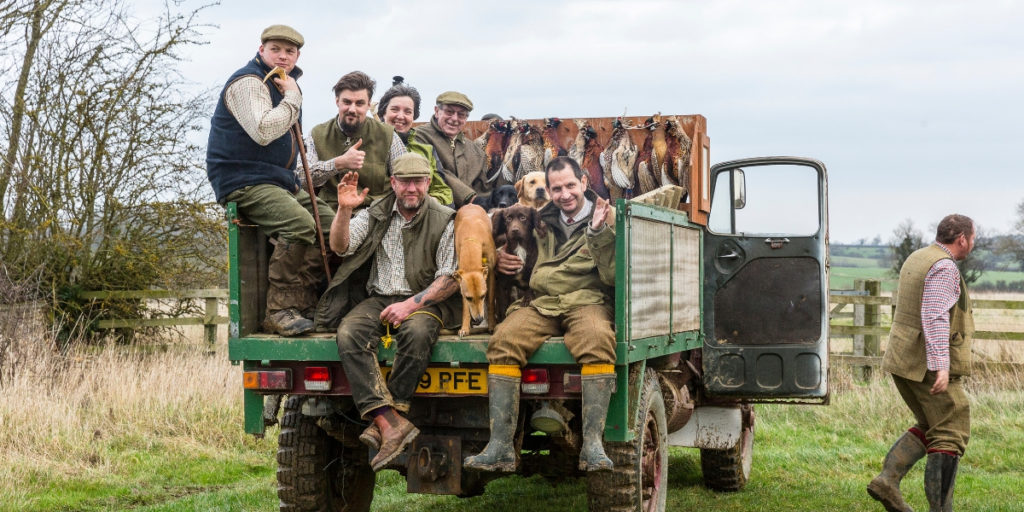[et_pb_section bb_built=”1″ fullwidth=”off” specialty=”off”][et_pb_row _builder_version=”3.12.1″ custom_margin=”0px|||” custom_padding=”0px|||” background_position=”top_left” background_repeat=”repeat” background_size=”initial”][et_pb_column type=”3_4″][et_pb_post_title _builder_version=”3.17.2″ comments=”off” featured_image=”off” /][et_pb_text _builder_version=”3.17.2″]

[/et_pb_text][et_pb_text _builder_version=”3.17.2″]
THE storm currently swirling around Larysa Switlyk perfectly illustrates the dangers of social media.
In our media training, BASC advises delegates to pause for a moment to imagine how the picture they are about to publish would play out on the front page of the Daily Mirror. Ms Switlyk is facing the nightmare of that scenario in spades this morning.
By choosing to use social media to tell the world about her exploits hunting goats and other animals on the small Scottish island of Islay, she has found herself thrust onto the news pages of The Times, the Daily Mail and a host of other papers and websites. And it doesn’t make pleasant reading.
If you look beyond the sensationalist headlines and extremist rhetoric, there are plenty of organisations like BASC jumping in to explain the use of shooting for the essential control of feral goats. Our members expect no less of us and it is right and proper that we highlight the importance of lawful and legitimate methods of population control.
But it is a much tougher ask for us to defend photographs that may give the impression of glorying in the death of an animal.
Ms Switlyk says she is passionate about educating people to the clear benefits of shooting. There are more subtle, more constructive ways of doing that than smacking the general public around the face with a photograph of a dead sheep dripping blood from its nose onto the rocks below.
As a well-known American hunter with a strong online presence, Ms Switlyk should be keenly attuned to the power of the media and social media in particular.
Like the rest of the shooting community, she will be acutely aware that no matter how hard she works to promote shooting she can never hope to win over the antis and the extremists. They are firmly entrenched at one end of the spectrum.
But we all have a personal responsibility to work hard to normalise shooting in the eyes of a general public which occupies the middle ground, a populace which is generally ambivalent to shooting until something comes along that has the potential to turn them against us.
I firmly believe that those who sit in the middle of the spectrum – the ones neither for nor against shooting unless given good reason to shift either way – stand to be won around if only we could get them out on a well-run shoot, for example.

On a fresh winter’s day, let them sit on a beaters’ bus being hauled through country lanes by a knackered old Land Rover, let them hear the frantic whistles as proud and determined men, women and children try to reign in excited spaniels, let them witness the amazing precision of a well-trained Labrador delivering a beautiful partridge or pheasant to hand. These are the sights and sounds that make a shoot day special to me and, I’m sure, many thousands of you.
Equally, all our hard work and good intentions can be undone in an instant on social media. It has the power to educate and inform. It also has the power to alienate vast swathes of the population, the very people we need to get onside – and keep onside – if shooting is to survive the challenges ahead.
Photographs probably carry the most risk and we have developed a clear checklist over the years which seems to work for the organisation in print and on social media and should work for you.

BASC’s social media policy has a section on photographs and it is useful to reference part of it here:
• Be aware that most smart phones now automatically geo-tag photographs, providing a direct reference to the location in which the photograph was taken. Uploading photos from devices like these could create a potential security risk when transporting guns or ammunition etc. They could be used to identify the location of a shoot or a home address.
• Give careful thought to the use of pictures which may give ammunition to those who wish to do harm to shooting. Consider whether it is appropriate to feature dead animals / birds / blood. We do not run scared of these things, but weighing up how your picture could appear in a newspaper is a useful method for deciding whether you should use a picture.
While Facebook has been accused recently of being over-zealous in the enforcement of its community standards, it is also worth being aware of their position. We do not particularly agree with all their sentiments, but the rules are theirs and we must operate within them if we wish to use their platform.
Facebooks says: “We remove content that glorifies violence or celebrates the suffering or humiliation of others because it may create an environment that discourages participation.”
Their rules also state – Do not post:
Imagery of violence committed against real people or animals with comments or captions by the poster that contain:
• Enjoyment of suffering
• Enjoyment of humiliation
• Erotic response to suffering
• Remarks that speak positively of the violence; or
• Remarks indicating that the poster is sharing footage for sensational viewing pleasure.
[/et_pb_text][et_pb_text _builder_version=”3.17.2″ /][et_pb_image _builder_version=”3.17.2″ src=”https://0ld.basc.org.uk/wp-content/uploads/2018/10/Multi-Cover-v3.jpg” url=”https://edition.pagesuite-professional.co.uk//launch.aspx?eid=96ff8a03-40fe-4436-b1c1-4f5431b111cb ” url_new_window=”on” border_color_bottom=”#ffffff” /][/et_pb_column][et_pb_column type=”1_4″][/et_pb_column][/et_pb_row][/et_pb_section]
